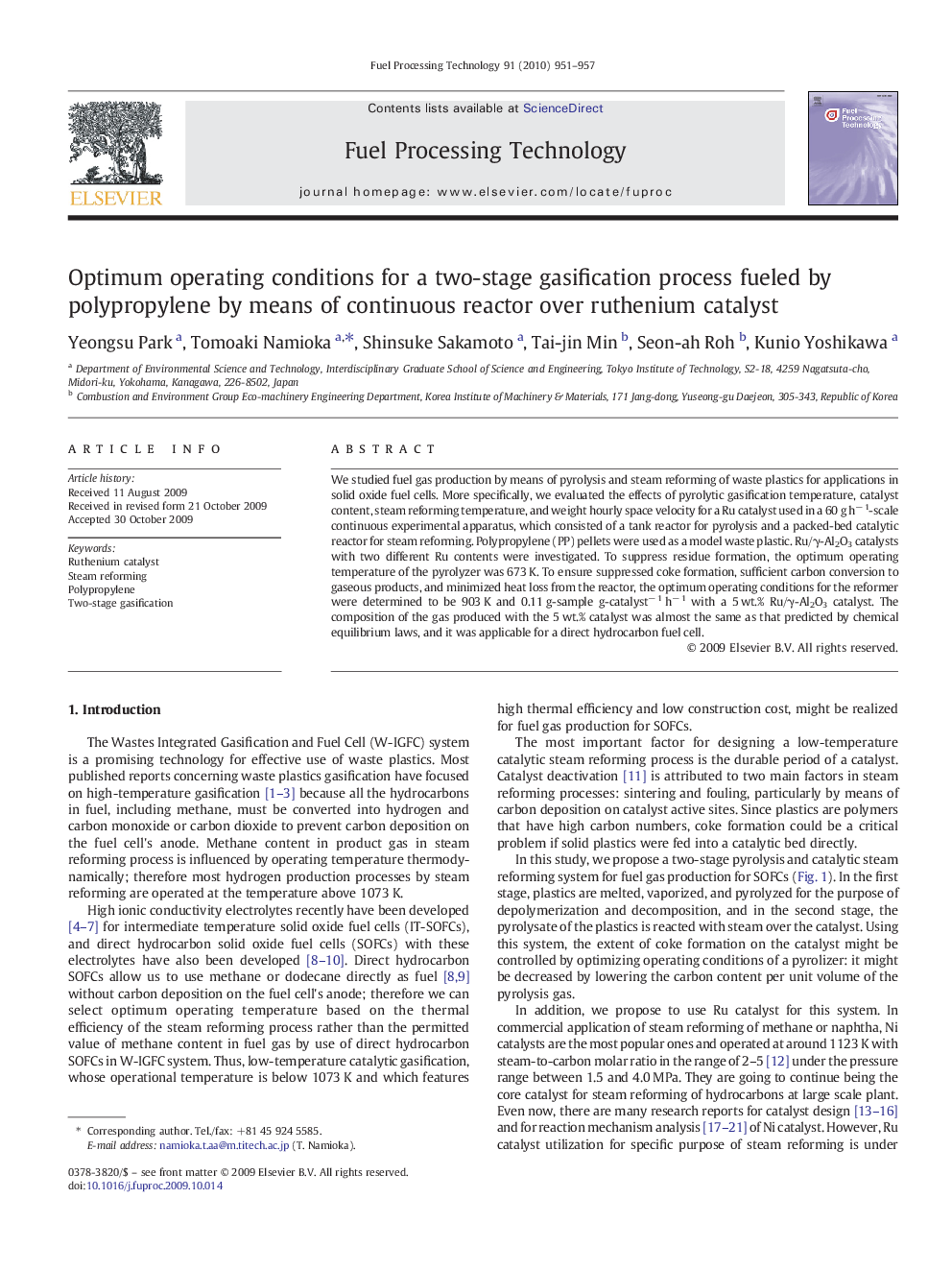| Article ID | Journal | Published Year | Pages | File Type |
|---|---|---|---|---|
| 211168 | Fuel Processing Technology | 2010 | 7 Pages |
We studied fuel gas production by means of pyrolysis and steam reforming of waste plastics for applications in solid oxide fuel cells. More specifically, we evaluated the effects of pyrolytic gasification temperature, catalyst content, steam reforming temperature, and weight hourly space velocity for a Ru catalyst used in a 60 g h− 1-scale continuous experimental apparatus, which consisted of a tank reactor for pyrolysis and a packed-bed catalytic reactor for steam reforming. Polypropylene (PP) pellets were used as a model waste plastic. Ru/γ-Al2O3 catalysts with two different Ru contents were investigated. To suppress residue formation, the optimum operating temperature of the pyrolyzer was 673 K. To ensure suppressed coke formation, sufficient carbon conversion to gaseous products, and minimized heat loss from the reactor, the optimum operating conditions for the reformer were determined to be 903 K and 0.11 g-sample g-catalyst− 1 h− 1 with a 5 wt.% Ru/γ-Al2O3 catalyst. The composition of the gas produced with the 5 wt.% catalyst was almost the same as that predicted by chemical equilibrium laws, and it was applicable for a direct hydrocarbon fuel cell.
